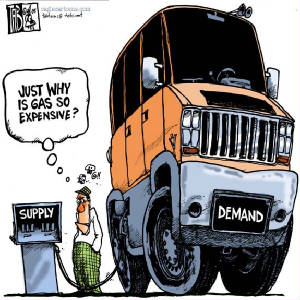User:DeborahMa
I'm Deborah. I'm a 3rd years Arts student majoring in Sociology and applying for a Commerce Minor.
A parabola as stated in class is a conic section, the locus of all pints equidistant (equal distance) to a given line and a given point as well as all the points (x,y) satisfying an equation of the type y = ax^2 +bx + c
According to Wikipedia under the keyword “parabola”, parabola are all around us in the physical world, for example, a bouncing ball reflects a parabola shape when it bounces from the ground to midair and back to the ground again captured through a stroboscopic flash at 25 images per second. Also, you can see parabola trajectories of water in fountains. When water is trajected from the fountain, the shape as which is shoots out is similar to the shape of a parabola. Lastly, according to Wikipedia, parabolas can also be found in the shape of main cables on a suspension bridge. It is stated in Wikipedia that “the curve of the chains of a suspension bridge is always an intermediate curve between an parabola.”
From looking up images under the keyword “parabola” on Google, I found that when jugglers juggle balls and objects in the air, the curve that it makes from when the object leaves the jugglers hand to when it is midair to the other hand of the juggler, it makes a curve similar to that of a parabola. The McDonalds “M” logo can to some degree I suppose reflect two upside-down parabola curve.
Homework 12 Problem #3
- On your profile page within the wiki, write an essay describing a particular use of calculus in your field of study, or in a field of interest to you. Feel free of course to add pictures, links and/or videos on the page (that's the advantage of writing online versus on paper). Your essay should be at least 500 words long (think a nice and interesting full page of text).
Field of interest: Economics
- In this essay, I wanted to discuss about my interests in economics and how it affects everyday consumers. I am the type of person that looks to look around for good and cheap bargains before settling on a particular product, so in a way prices of products and merchandise influence the way I feel about the brand and the product and most of the time, if I feel I can find a cheaper price elsewhere, I will go that distance to lower my costs.
- A recent example is buying textbooks for the semester; university textbooks are only getting more and more expensive each year and it is only ideal to think twice and shop around between settling on one.
So what does this all have to do with economics? I feel that calculus in the field of economics plays a very important role because it is through rules such as elasticity that enable economist to come up with the supply and demand model, the marginal cost and marginal revenue charts.

- In business, calculus and math in general can allow companies to maximize their profit.

With the prices of gasoline dropping once in a while, it encourages consumers and car owners to fill up more. But what happens when there is a lot of demand and very minimal supply of gasoline?

Just as a speedometer monitors the rate-of-change of a car, similar calculations can be applied to stocks. Although there is no true "instantaneous rate of change" required of a first derivative, rate-of-change calculations using stock prices of today compared with say 200 days ago can provide meaningful values to plot. When prices trend down, the rate-of-change indicator will be in a negative position -- similar to how the first derivative of a quadratic behaves. Just as parabolas have linear first derivatives, stocks on a parabolic trajectory up or down will have a pseudo-first-derivative that maintains a linear shape. By definition, this first derivative will have to break its trend before the market's actual prices do. The shape of a rate-of-change plot will often carry hidden value too. Stocks, once leaving the base, are free to climb to the target (reflected) point. Once there, traders have little incentive to hang on, expecting higher prices, so they reverse their positions. This does lead to abrupt melt-ups and melt-downs, but rarely without some re-testing of the highs(lows).
Further applications of calculus in economics include costs, marginal costs and revenues.